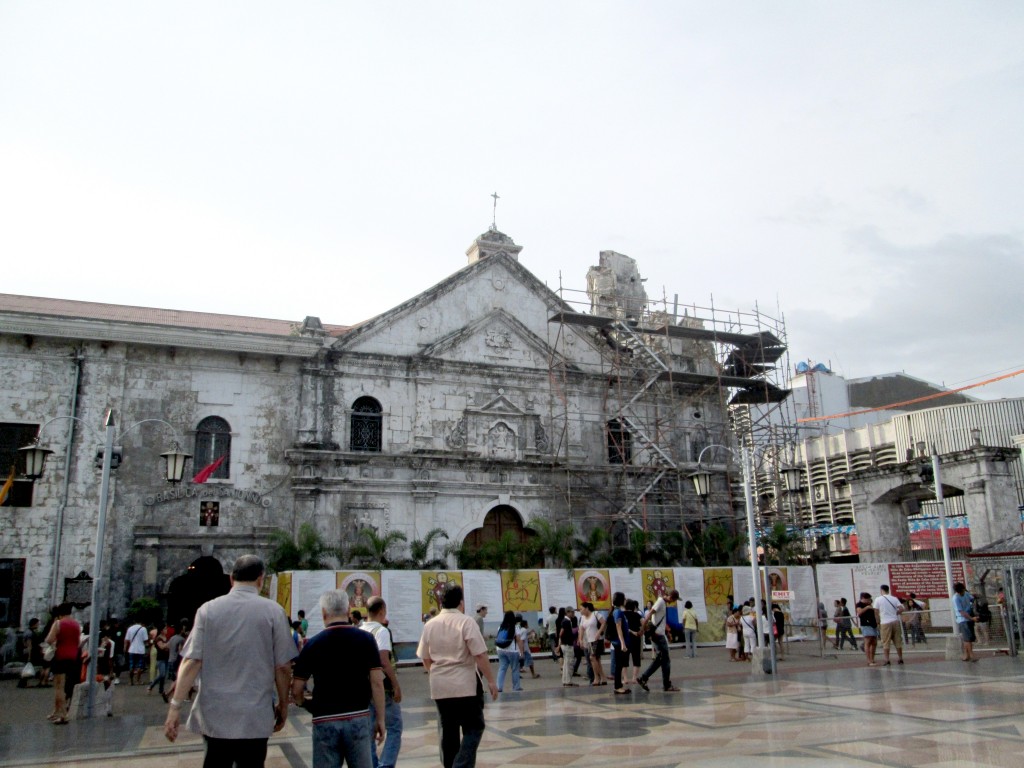
Scaffolds are set up at the Sto. Niño Basilica tower to facilitate the assessment of damage caused by the Oct. 15, 2013 earthquake.
MANY people have been asking why it is taking so long for repair works to begin on the damaged belfry of the Basilica del Santo Niño. The truth is that the procedure for the belfry’s reconstruction is very complex. To facilitate decision-making, the priests at the Basilica have formed a Project Management Team that will coordinate the functions of the different professionals and craftsmen who will be involved.
It begins with a master plan
A master plan is going to be crafted by Escuela Taller, a heritage conservation group based in Manila. The master plan will spell out the details on how the rehabilitation of the belfry is to proceed, beginning with data gathering, followed by assessment of the findings about the extent of the damage to the structure and a diagnosis on the nature and extent of structural failure. This will enable the engineers, planners and conservators to determine the appropriate intervention measures needed to address the damage. The plan will be completed in March this year.
Architectural archaeology
Engineer Angel Lazaro, a doctor of Structural Engineering, briefs a team of architects and engineers on possible approaches for the structural rehabilitation of the church tower.
One of the immediate actions taken after the collapse of the belfry was the retrieval, sorting and recording of the stones and other debris and making an archaeological record of them.
These then need to be further catalogued for the possibility of their future re-use. A team from Escuela Taller and the University of San Carlos will then endeavor to fit the stones together as in a jigsaw puzzle based on the documentation of the Basilica belfry done some years back by the USC College of Architecture.
The structural rehabilitation
The structural repair of the belfry’s wall of coral stones poses the greatest challenge involving as it does the guarantee of safety for the people who frequent the church. It is a simple thing to do for a modern structure. Constructing a new framework with modern technology will immediately solve the problem. Not so with a historic structure such as the 200-year-old Sto. Niño Basilica. Structural safety has to be married to historic significance and aesthetic integrity.
At the moment, proposals andideas from conservation experts who have years of experience in other countries are being studied by the Project Management Team headed by Fr. Harold Rentona, OSA. There are ongoing consultations with Filipino structural experts and local stakeholders as well.
Bells have names. This one, the “Sto. Niño de Cebu” though now silent, still hangs on top of the damaged belfry.
The architectural and aesthetic restoration Among the church towers in Cebu, the damaged Sto. Niño belfry enjoys the distinction of having the most number of bas-reliefs on its panels. Cracks and loosening of plaster resulting from traffic vibrations have worsened after the earthquake.
The expert restoration of these art works involves rectified photography, well-studied mortar mix, and detailed handling of the lacunae or gaps in the design of the artworks. We are not yet sure if we have such expertise in the Philippines.
The call of the tower
Not to be overlooked are the bells. For decades, Cebuanos have heard and responded to their messages. There had been calls to prayer like the Angelus; pealing during processions, clanging in celebration, tolling for sad times. The familiar sounds of the bells had been a comforting reminder about God’s presence in our midst.We will only have the memory of those during this year’s celebration of the Feast of the Santo Niño. To be sure, the bells will resonate and ring audibly in the hearts of many still, together with the hope of hearing them again from their perch in a newly repaired tower.